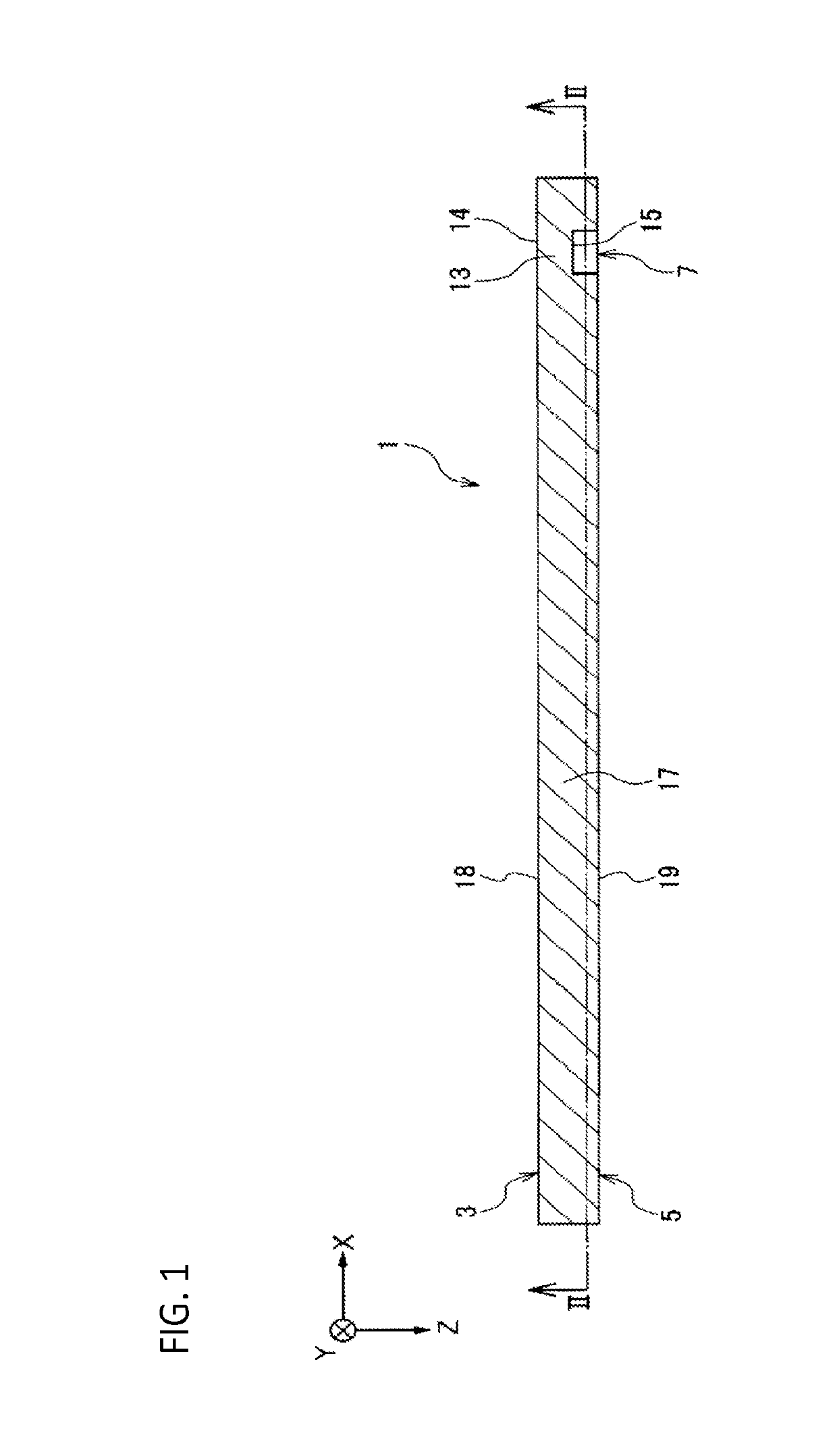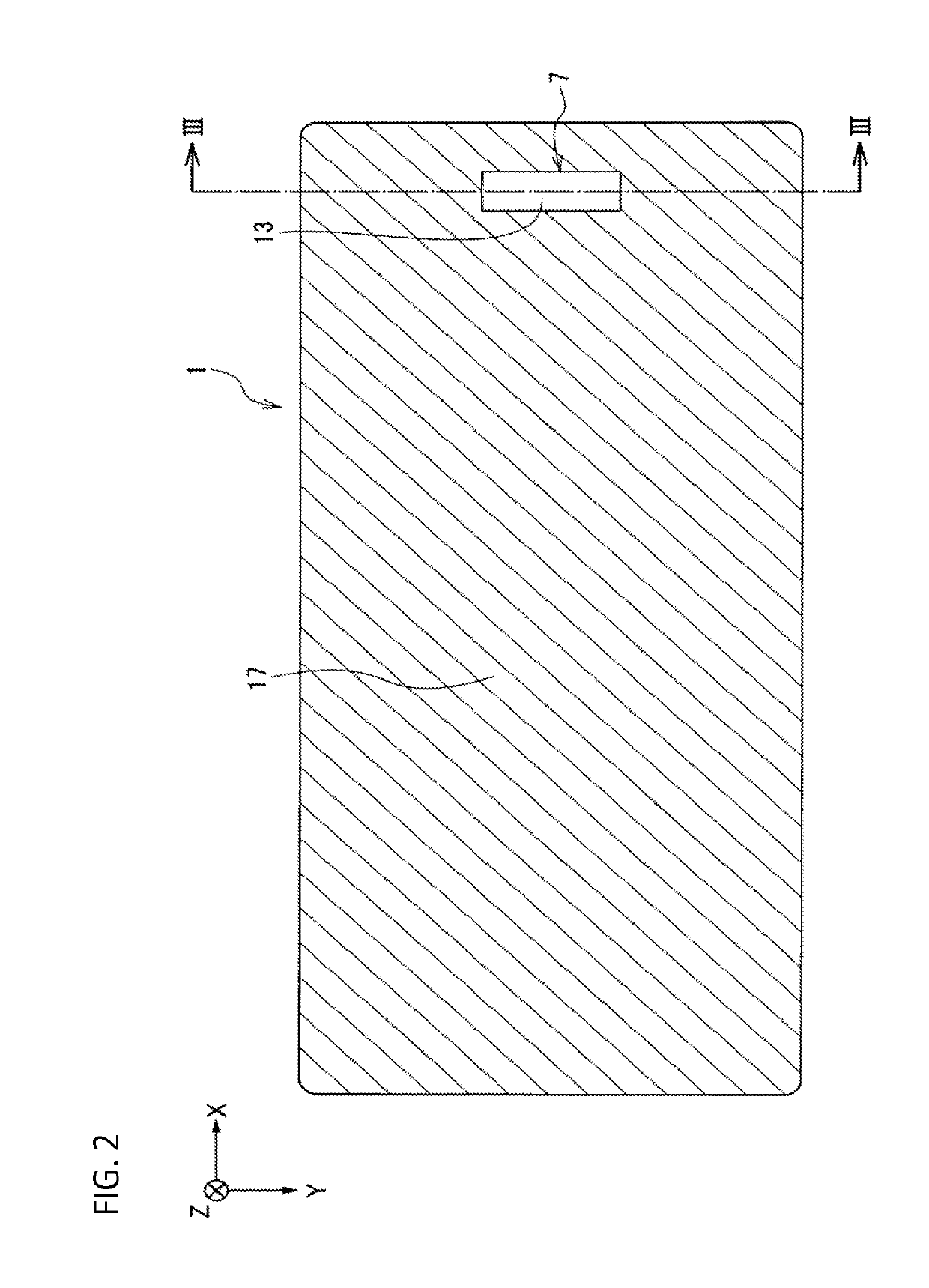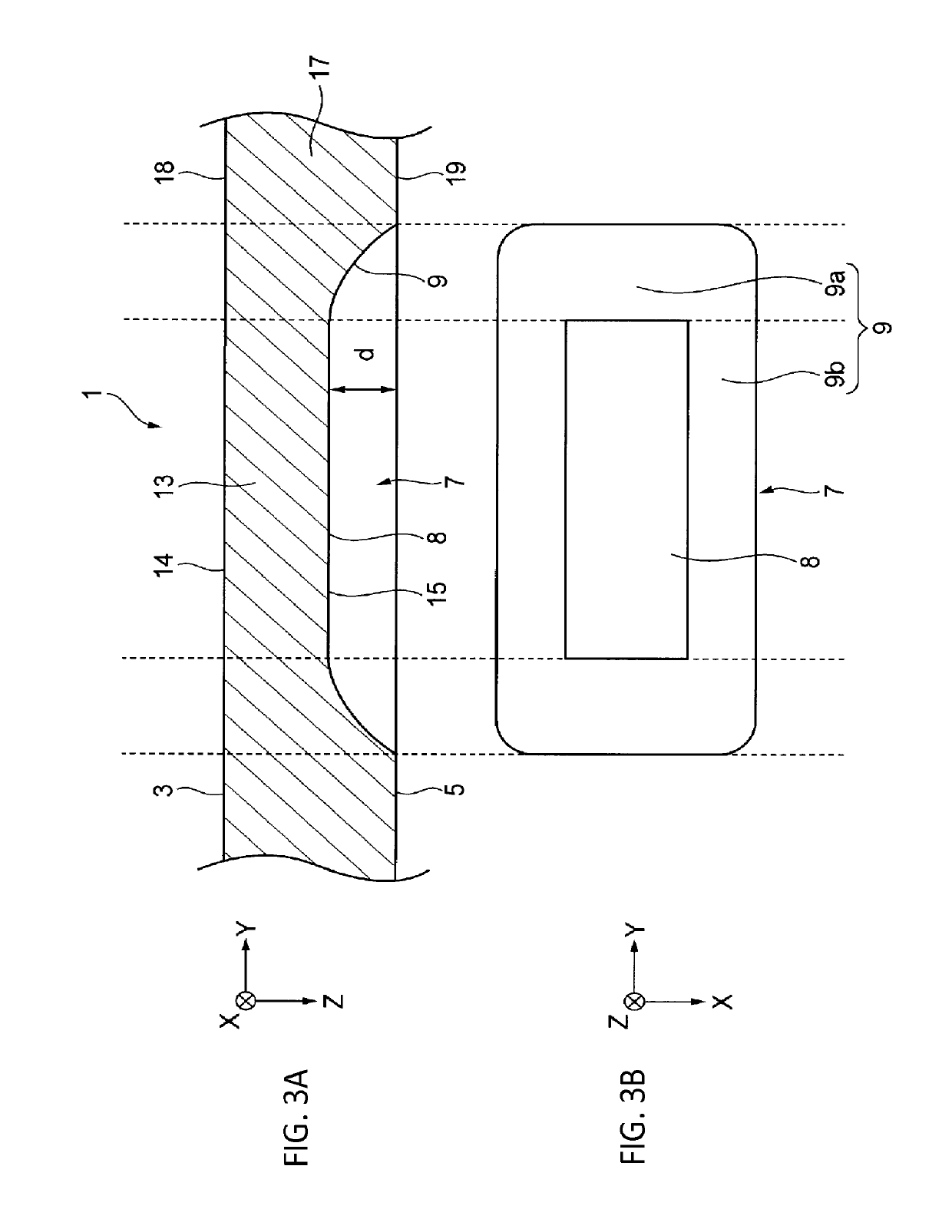Glass substrate and method for manufacturing the same, cover glass and method for manufacturing the same, personal digital assistant, and display device
a technology of glass substrate and cover glass, which is applied in the direction of coatings, instruments, other domestic objects, etc., can solve the problems of sensor sensitivity decline, uneven capacitance between the sensor electrode and the detection object, and uneven so as to achieve satisfy the surface appearance of the cover glass. , the effect of good flatness of the thin portion
- Summary
- Abstract
- Description
- Claims
- Application Information
AI Technical Summary
Benefits of technology
Problems solved by technology
Method used
Image
Examples
example 1
[0266]An example of the glass substrate 101 shown in FIG. 8 and its manufacturing method is described. A glass member 201 (see FIG. 11) having a length in the direction X of 730 mm, a length in the direction Y of 920 mm and a thickness in the direction Z of 0.5 mm was used. In the glass member 201, 65 concave portions 207 in total, concretely 5 lines in the direction X at a pitch of 130 mm and 13 rows in the direction Y at a pitch of 65 mm were formed (see FIG. 12). The size of the concave portion 207 was 5 mm in length in the direction X, 13 mm in length in the direction Y and 0.27 mm in depth in the direction Z. Specifically, the thickness in the direction Z of the thin part formed by providing the concave portions 207 was 0.23 mm.
[0267]The method for forming the concave portions 207 in the front surface 203 or the back surface of the glass member 201 is as follows. First, a resist material was applied to the front surface 203 or the back surface of the glass member 201, holes hav...
example 2
[0271]An example of the glass substrate 101 and its manufacturing method is described. This differs from Example 1 in that an aluminosilicate glass manufactured by Asahi Glass Co., Ltd., Dragontrail-X, was used as the glass member 201, and that the shape of the concave portion 207 was a circular shape having a diameter of 10 mm. In addition, after the glass member 201 was taken out from the hydrofluoric acid (HF) solution after etching, this was kept as such for 30 seconds and thereafter the resist materials (the first mask member 301 and second mask member 401) were peeled away, and then this was washed. In the same manner as in Example 1 except these points, a glass substrate 101 was produced.
[0272]The side surface of the concave portion 107 had a curved shape smoothly connecting to the bottom of the concave portion 107, and the radius of curvature from the bottom of the concave portion toward the side surface thereof was at most 0.4 mm. The connecting part between the side surfac...
example 3
[0273]An example of the cover glass 1 and its manufacturing method is described. The glass substrate 101 of Example 1 or 2 was cut into rectangular pieces in a size of 130 mm×65 mm each having one concave portion 107, using a wheel cutting device for glass cutting. Accordingly, plural rectangular cover glasses 1 each having one concave portion 107 in the back surface thereof were obtained. In cutting, the second mark 122 was read and the cutting position was determined. For securing correct cutting, it was confirmed whether the cutting line could run through the center of the first mark 121, from which correct cutting in the predetermined shape was confirmed. The second mark 122 and the concave portion 107 have a correlation with each other in point of the position thereof, and therefore the concave portion 107 was arranged at the desired position of 130 mm×65 mm.
[0274]As shown in FIG. 30A, the four corners 2 of the rectangular cover glass 1, in a plan view thereof, were cut with CN...
PUM
| Property | Measurement | Unit |
|---|---|---|
| haze | aaaaa | aaaaa |
| arithmetic mean roughness | aaaaa | aaaaa |
| haze | aaaaa | aaaaa |
Abstract
Description
Claims
Application Information
 Login to View More
Login to View More - R&D
- Intellectual Property
- Life Sciences
- Materials
- Tech Scout
- Unparalleled Data Quality
- Higher Quality Content
- 60% Fewer Hallucinations
Browse by: Latest US Patents, China's latest patents, Technical Efficacy Thesaurus, Application Domain, Technology Topic, Popular Technical Reports.
© 2025 PatSnap. All rights reserved.Legal|Privacy policy|Modern Slavery Act Transparency Statement|Sitemap|About US| Contact US: help@patsnap.com



